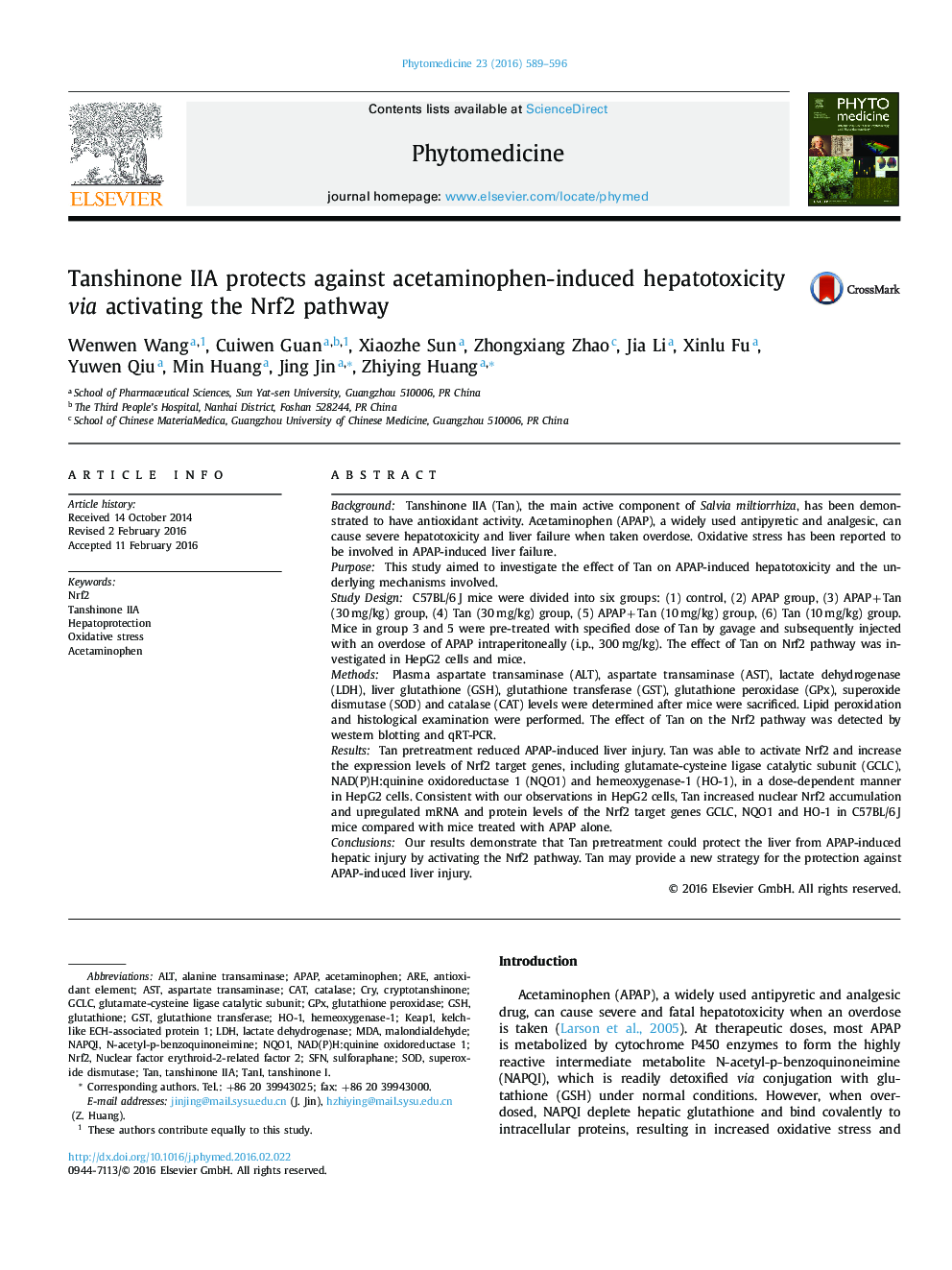| کد مقاله | کد نشریه | سال انتشار | مقاله انگلیسی | نسخه تمام متن |
|---|---|---|---|---|
| 2496234 | 1116115 | 2016 | 8 صفحه PDF | دانلود رایگان |

BackgroundTanshinone IIA (Tan), the main active component of Salvia miltiorrhiza, has been demonstrated to have antioxidant activity. Acetaminophen (APAP), a widely used antipyretic and analgesic, can cause severe hepatotoxicity and liver failure when taken overdose. Oxidative stress has been reported to be involved in APAP-induced liver failure.PurposeThis study aimed to investigate the effect of Tan on APAP-induced hepatotoxicity and the underlying mechanisms involved.Study DesignC57BL/6 J mice were divided into six groups: (1) control, (2) APAP group, (3) APAP + Tan (30 mg/kg) group, (4) Tan (30 mg/kg) group, (5) APAP + Tan (10 mg/kg) group, (6) Tan (10 mg/kg) group. Mice in group 3 and 5 were pre-treated with specified dose of Tan by gavage and subsequently injected with an overdose of APAP intraperitoneally (i.p., 300 mg/kg). The effect of Tan on Nrf2 pathway was investigated in HepG2 cells and mice.MethodsPlasma aspartate transaminase (ALT), aspartate transaminase (AST), lactate dehydrogenase (LDH), liver glutathione (GSH), glutathione transferase (GST), glutathione peroxidase (GPx), superoxide dismutase (SOD) and catalase (CAT) levels were determined after mice were sacrificed. Lipid peroxidation and histological examination were performed. The effect of Tan on the Nrf2 pathway was detected by western blotting and qRT-PCR.ResultsTan pretreatment reduced APAP-induced liver injury. Tan was able to activate Nrf2 and increase the expression levels of Nrf2 target genes, including glutamate-cysteine ligase catalytic subunit (GCLC), NAD(P)H:quinine oxidoreductase 1 (NQO1) and hemeoxygenase-1 (HO-1), in a dose-dependent manner in HepG2 cells. Consistent with our observations in HepG2 cells, Tan increased nuclear Nrf2 accumulation and upregulated mRNA and protein levels of the Nrf2 target genes GCLC, NQO1 and HO-1 in C57BL/6 J mice compared with mice treated with APAP alone.ConclusionsOur results demonstrate that Tan pretreatment could protect the liver from APAP-induced hepatic injury by activating the Nrf2 pathway. Tan may provide a new strategy for the protection against APAP-induced liver injury.
Figure optionsDownload high-quality image (108 K)Download as PowerPoint slide
Journal: Phytomedicine - Volume 23, Issue 6, 1 June 2016, Pages 589–596